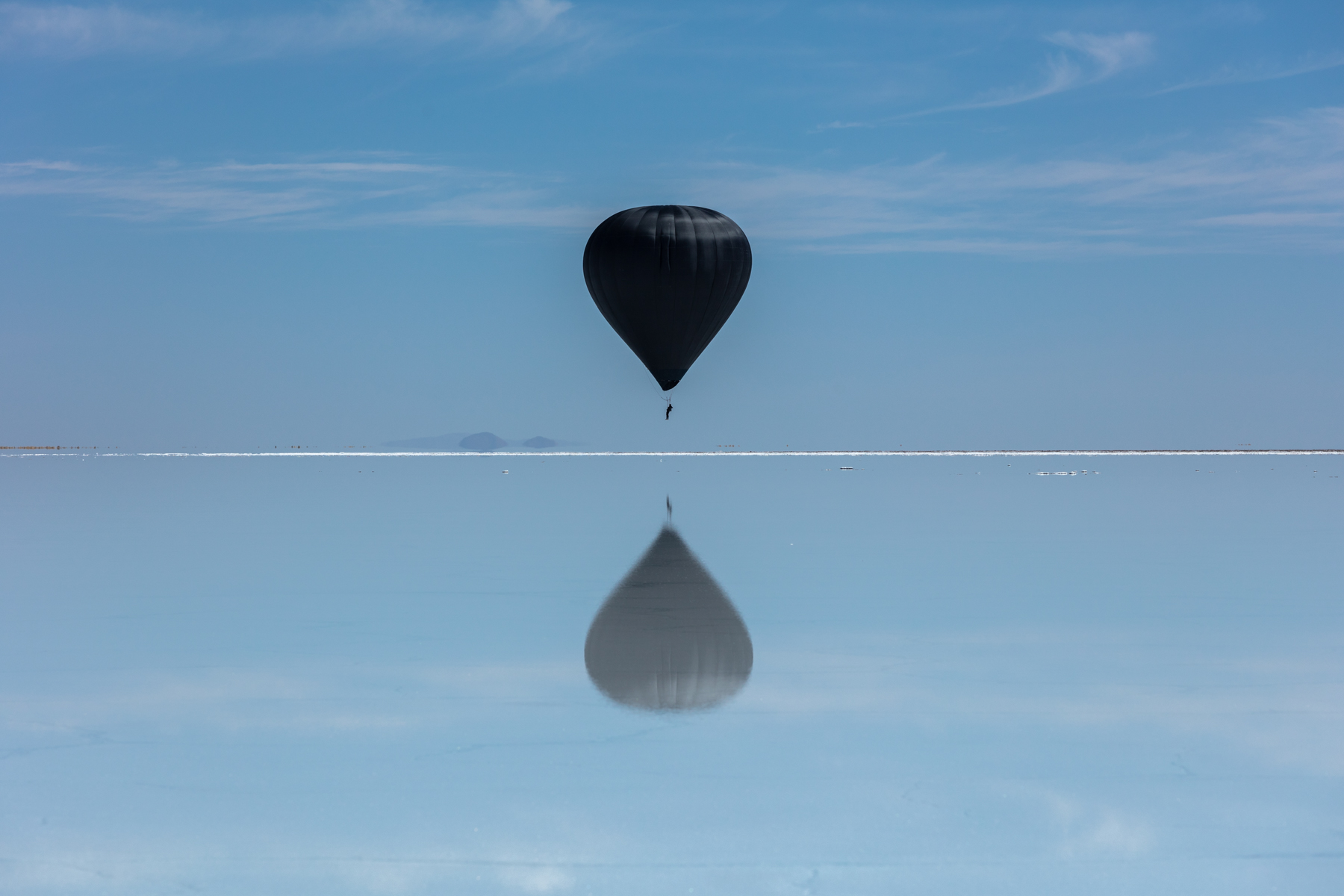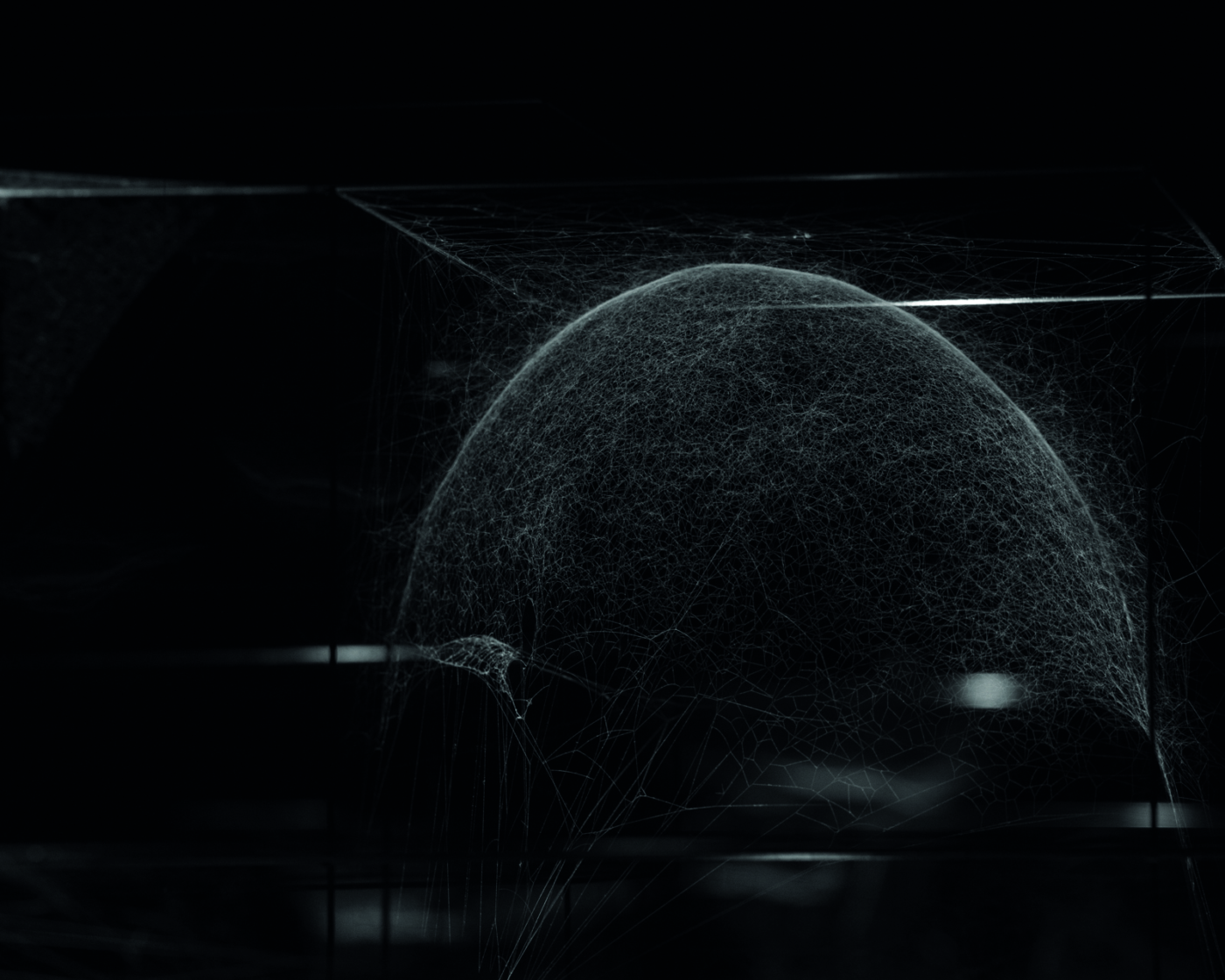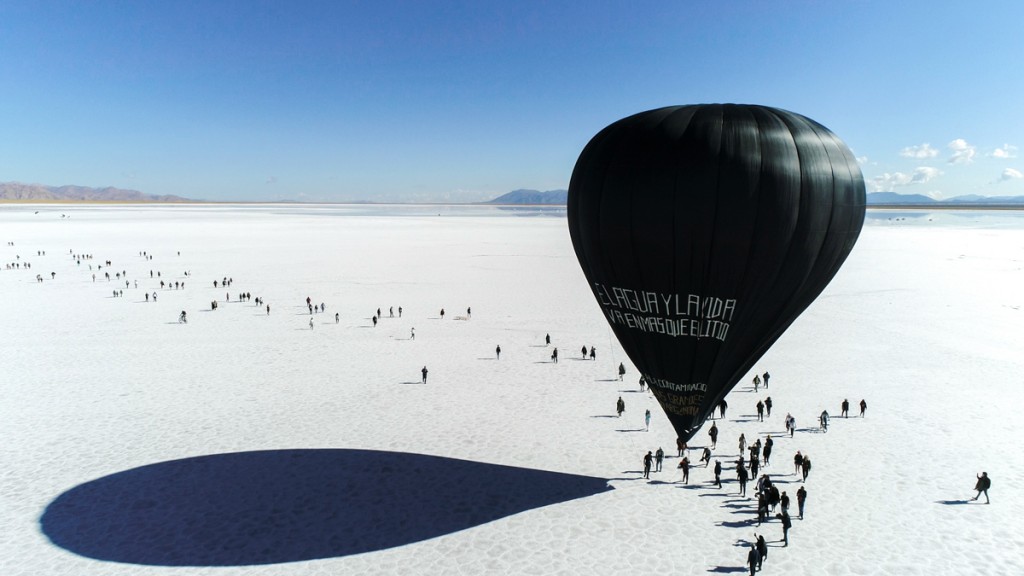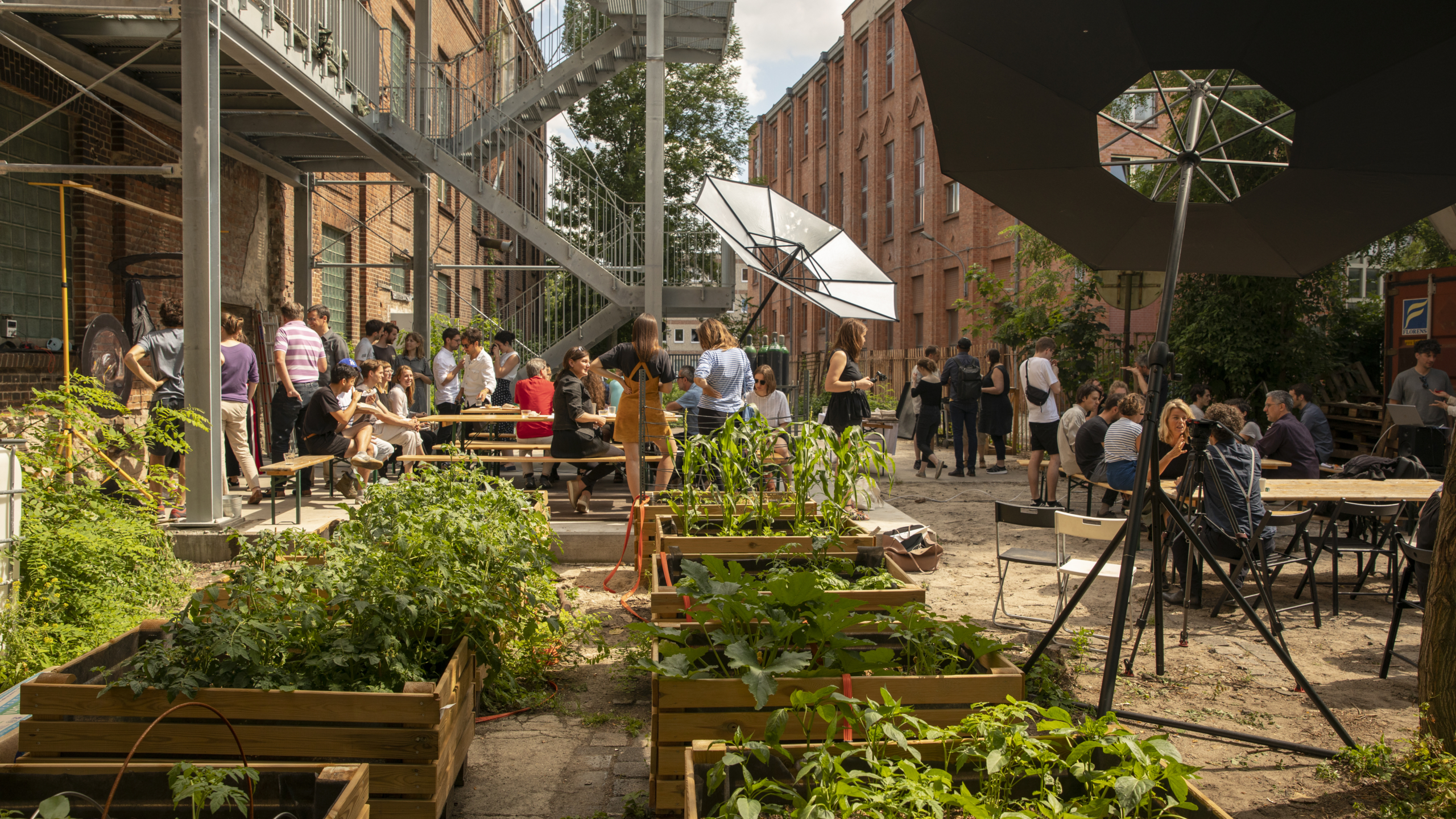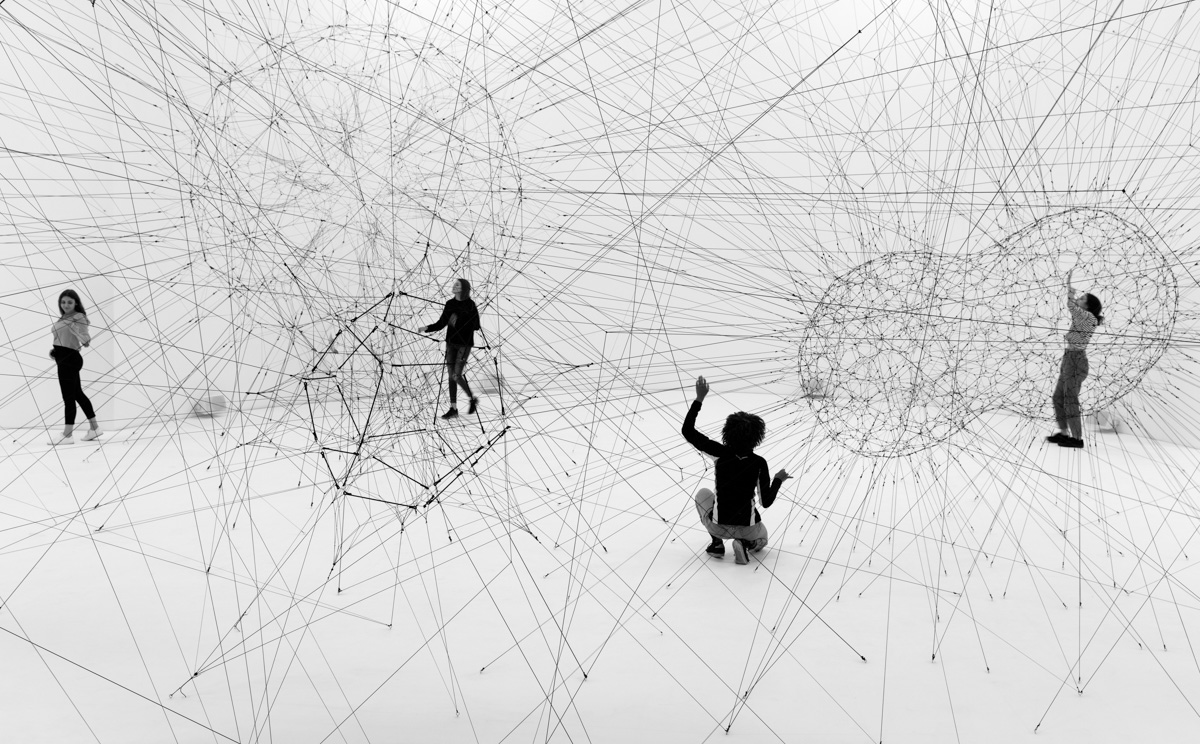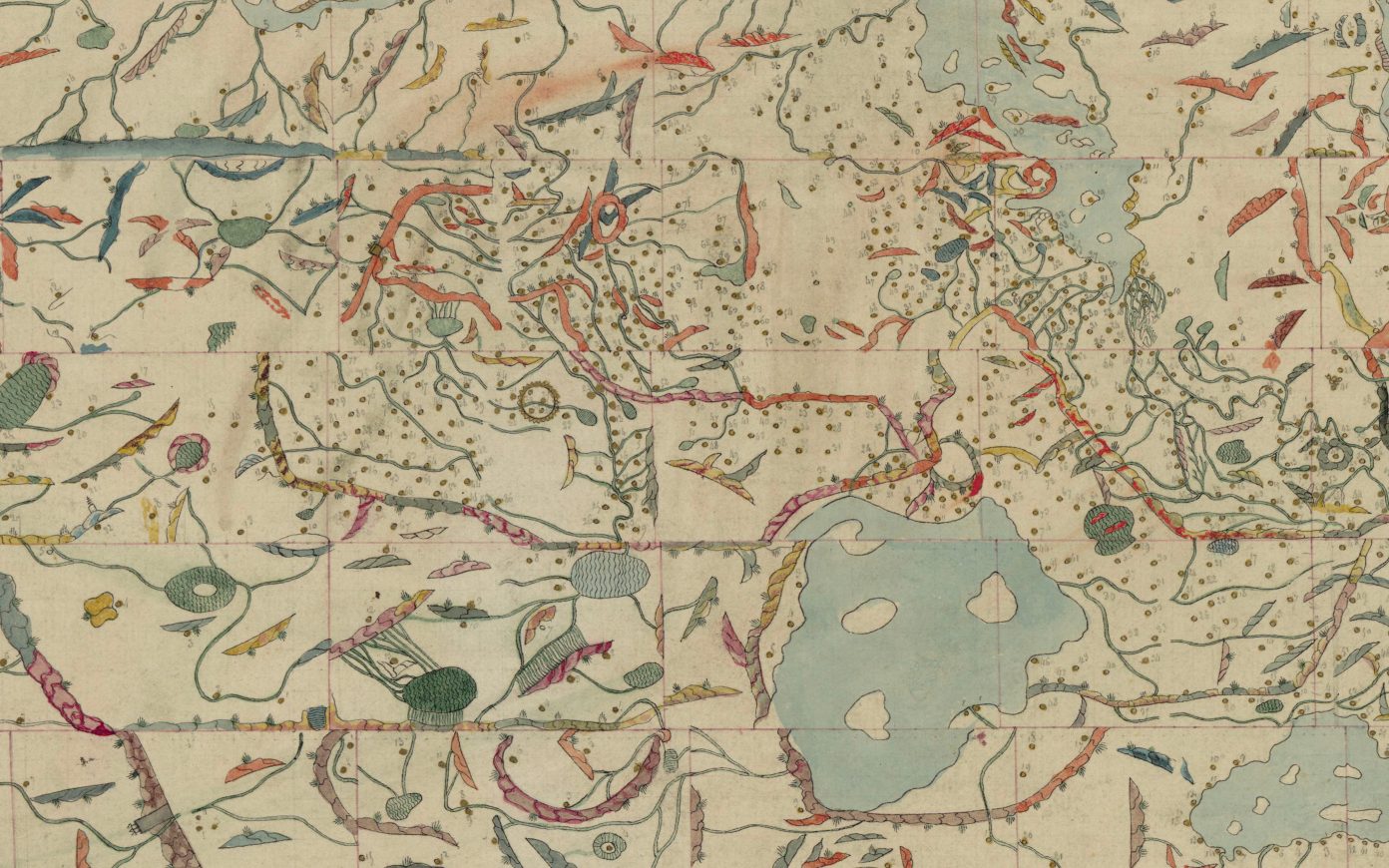I believe that we must step up collective actions like this one on all fronts, not only be an artist or an architect and keep to one’s field. Being only an architect isn’t enough to really contribute to change things anymore if it ever was enough. We must engage in rethinking the way we’ve been designing and organizing in the West, open up to other disciplines, to other societies and other worldviews. Quite simply, we have to move beyond the silos in which Western modernity has enclosed us.
Rebecca Lamarche-Vadel: Art has always been very much about reshaping sensitivities and our grasp on the visible. Somehow, since the earliest age of creation, even in cave paintings, we can see this deep need to represent and transcend, or to represent a transcendence of what can be seen and the power of what cannot be seen. Creation is derived from this urgent need that human beings have to acknowledge a reality that might not be as obvious or as tangible. The urgency of the time we live in includes an overwhelming discourse of catastrophe, of an impending Armageddon. This is producing a general state of panic or paralysis. The overwhelming attitude is that we’re too late and there is nothing we can do, a form of resignation. Certain artists have devoted their entire existence to alternative visions of the world, and I believe this posture is needed today more than ever. It is in such moments of crisis and severe lack of understanding of an overwhelming, radical situation that artists take on new relevance. Joseph Beuys was already advocating the social mission of the artist decades ago. His concept of “social sculpture” acknowledged the idea that the artist has a very special role beyond the art world, in broader society. This position should not only be embraced but encouraged, supported, and promoted as such. Marcel Duchamp had this posture where he wanted to permanently expand the territories of creation, art’s subject matter.
It seems that we may be becoming more aware of the fact that artists offer visions and perspectives that are further enriching us. For instance, one of Tomás’s projects for Carte Blanche in Palais de Tokyo built on the hypothesis that spiders can capture primordial gravitational waves with their webs, as they have developed senses that by far exceed those of humans. Gravitational waves are ripples in the fabric of space that are hypothesized to be caused by colliding black holes. They were only first recorded in 2017, however, the hypothesis of Tomás is that spiders have been able to detect them since the earliest times due to their unique abilities. He had been working on this idea with various physicists, and is in fact still engaged in studying the potentialities of non-human beings. This is one of the projects where he overlays a very poetic and visionary hypothesis onto the scientific world with the goal of expanding our understanding of the variety and richness of life of non-human beings. In this sense, he embodies this idea of the artist that expands our understanding of the natural world and shows how boundless we could be as humans if we worked to develop other types of awareness.
I always thought that artists had a very special position within society, and I believe it’s the role of society to acknowledge that and let it happen. I’m terrified by the fact that what currently decides whether beings are considered worthy or unworthy of existence, whether shops and cultural spaces can open or must close is driven purely by economics and monetization. Our current model of society only recognizes financial and economic value, and not spiritual or mind-expanding value. We will have to ask ourselves a lot of questions about these decisions, because, beyond being indiscriminate and extremely unfair, it shows something much deeper about what kind of values we worship and support. I believe that artists are promoting values that are essential for us as human beings, and that, in these moments, they have a very special role to play which might not be unlike that of the Oracles in Ancient Greece. Like the Oracles, the modern artist is an individual who has a very special voice and is able to express some kind of truth or sentiment that we are blind to. The vision and perspective of artists is something that we should all listen to much more carefully.
Do you think this also entails considering and leveraging other intelligences, not only those derived from Western modernity?
Tomas Saraceno: I believe that by dividing ourselves from nature, we will never allow ourselves to become truly intelligent. So, yes, Let’s look at the spider /web with the “extended embodied intelligence” that arises from being attuned to our environment. Returning to the case of Aerocene Pacha, we needed to know the weather to prepare the flight because the sculpture can only rise up into the air when the temperature and sunlight are just right. My impulse was to look this up on Google, but this proved impossible, because I had no signal. Well, the people living there simply looked at the clouds and through this extended intelligence, they could forecast the weather based on their observable reality. This is an example of a very simple way in which somehow we have become dependent on a central machine system from which we must find ways of relating to ourselves. I grew up in Italy, and we have sayings like “Cielo a pecorelle, pioggia a catinelle,” meaning that when the clouds take on the shape of sheep, the rain will come. These are forms of knowledge that we used to have, but that have disappeared with modernity.
This ties in with my interest in the “embodied cognition” of spiders, because their cobwebs form part of this extended intelligence. Agamben and Von Uexküll talk about the “reciprocal blindness” in which each species is confined to, even though they are nevertheless capable of communicating with one another to a surprising extent. Spiders cannot see the flies and the mosquitoes, yet, in the course of evolution, the geometry of their webs shifted in such a way that flies continue getting caught in them as their own flying patterns change. Neither the spiders nor the flies can perceive the world of the other yet, somehow, they are sensing each other. Most human beings have lost this capacity to tap into the sense of others, this “response-ability,” as Donna Haraway calls it. Ants, for instance, are able to sense tsunamis in advance, so because humans used to maintain a relationship with ants, like a large family, with no separation, when the ants would suddenly start moving uphill, humans would follow, and no one would die. These are things that we are only slowly rediscovering, just as when we very recently discovered that dogs could sniff out Covid faster than any technology.
I visited a village in Cameroon located very close to the border with Nigeria where there is an age-old practice, of spider divination called Nggam. During Nggam, a specific set of binary questions are asked of a grounddwelling spider, whose response is interpreted via the spider’s specific rearrangements of the arachnomancer’s divination cards—stiff plant leaves from which symbolic shapes have been excised, and which have been arranged around the entrance to the spider’s burrow. The practice of Nggam is premised on an ethics of care and respect: between the human community, the diviner and the ground-dwelling spider whose wisdom is consulted. Spiders are consulted for certain decisions regarding the village, acting as a sort of tribunal. I am working now with the Cameroonian spider diviner Bollo Pierre and Oxford anthropologist David Zeitlyn on a project for Berliner Festspiele as part of the programme series Immersion at Gropius Bau, Berlin. I believe that in the context of mass extinction we are currently living in, we should be doing more of this, turning towards insects and spiders in order to better understand what many humans aren’t seeing in the world. We must take heed of these non-human intelligences.
Not only them, however. In many countries, indigenous communities are treated like non-humans and live on the fringe of society and the economy. Yet, though indigenous peoples only amount to approximately 6% of the global population, living a very intrinsic and deep relationship with the milieu that is surrounding them, the lands they manage support 80% of the world’s biodiversity. This means that, where humans are truly embedded in the web of life, biodiversity on the whole is in better shape. In Ecuador, as in many other places throughout the world, the richest biodiversity can be found precisely in those areas where a certain type of humanity is present and has managed to coexist with it. As we are currently witnessing the direct effects of zoonosis—infectious diseases caused by pathogens that have jumped from non-humans to humans—, it is important to consider that these spillovers are inseparably linked to biodiversity crises and destabilized ecosystems. Equilibrated cohabitation is a way to preserve diverse habitats; a way of living together which indigenous communities have been practicing for generations.
There is a huge need to acknowledge this, to strive towards a certain equality, and correct our values systems, addressing not only indigenous populations by the way but other growing social movements including Black Lives Matter and #MeToo. This is also why my upcoming augmented reality artwork “Webs of Life”, on the Acute Art app as part of Back to Earth at Serpentine this summer, will donate proceeds from the sale of the AR sculptures Maratus speciosus and Bagheera kiplingi to Fundación Ambiente y Recursos Naturales (FARN), a non-profit that connects with communities in northern Argentina that work to maintain biodiversity in their region. This project is an experiment in biodiversity and technodiversity that I’ve worked on with the research group Arachnophilia that I helped to found in 2018.
Rebecca Lamarche-Vadel: The fundamental point for me is to understand that we are inheriting what might be considered the “Great Divide,” which is the fact that humans, in order to feel secure and comfortable within this world, have developed systems to separate, divide, categorize, and break relationships, interdependencies, ecosystems, vital needs and copresences, and solidarities. We are inheriting a very violent culture of authority and mastership that has transformed the Earth into a resource that can be endlessly exploited in order to feed our own profit motives and desires. Everything that derives from this culture—exhibitions included— expresses some form of violence. We shouldn’t ignore the fact that exhibitions are a very recent ritual for humanity, and are only a few centuries old. They derive from the “cabinets of curiosities,” which themself derive from the act of colonization. Bringing back objects from expeditions or trophies, for example, would historically be described as curiosity, but can now also be viewed as an act of appropriation, a way of taking possession of whatever had been encountered. Since around the end of the nineteeth century and beginning of the twentieth century, exhibitions have traditionally been based on the supremacy of the visual senses, meaning that, basically, our encounter with art mostly derives from the way we look at still objects.
As a curator, I must ask myself how we can invent new rituals for a new century. One of the options is to accept the aleatory, accidents, and porosity. In other words, to accept something that I’ve been describing lately as an exposition de catastrophe (disaster exhibition), a term inspired by disaster medicine, which is a discipline that forces practitioners to step out of their comfort zone, and be inventive while accepting their limitations. Similarly, artists need to accept the boundaries of their desires and the impossibility of bringing them into existence. Exhibitions are one of the most controlled rituals, for example. There are opening hours, and you follow a top-down curated experience, a specific, predefined route through an exhibition of artworks hung on walls. You have all a discourse around the works, and the visitor is asked not to scream or even speak, to be very discreet, to keep a certain distance, and all of this extremely authoritarian choreography is rooted in this idea of categories and separation. What I’m trying to do with exhibitions is to work out how to create a space that allows the outside to come inside, in order to transform the rules of the game, or to try to imagine new modes of presence for the visitors. This provides for new modes of encountering art, while allowing participants to behave differently, and to be much less authoritarian towards the experience.
Another way to try to overcome this situation is to invite people who do not call themselves artists into the process. The first time I worked with Tomás Saraceno was actually for Le Bord des Mondes [At the Edge of the Worlds], an exhibition where I was following the lead of Marcel Duchamp’s 1913 famous question on whether we could make works of art that are not art. I travelled the world for two years trying to find highly unique creators that were not necessarily calling themselves artists but who were producing ambivalent, ambiguous, poetic, inspiring works that I felt truly deserved more exposure, and I felt we almost had a duty to acknowledge as art. I invited twentyfive creators, and out of those, Tomás was the only one who was rather wellknown. To me, Tomás has always been an artist who has been between worlds and growing in the space between. His work with spiders, which is the one that I showed, has this ambiguity of the authorship in terms of who holds the pen and holds the creation.

